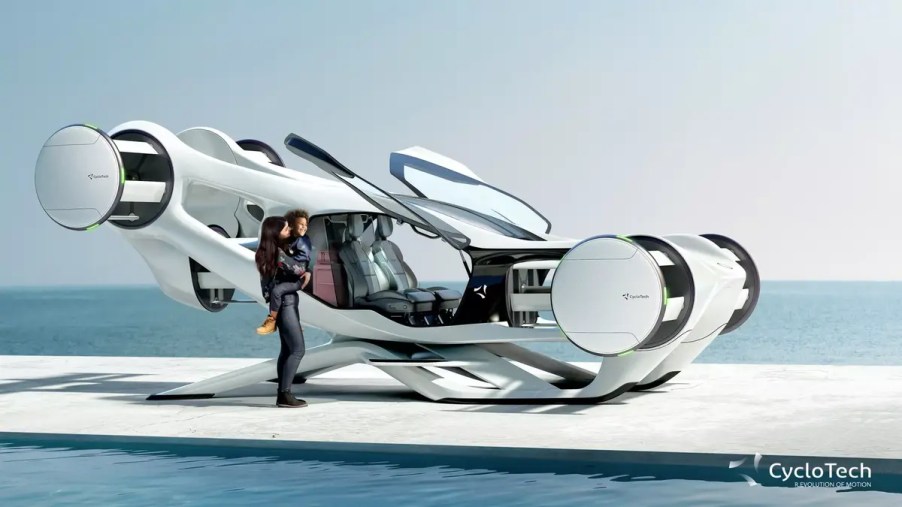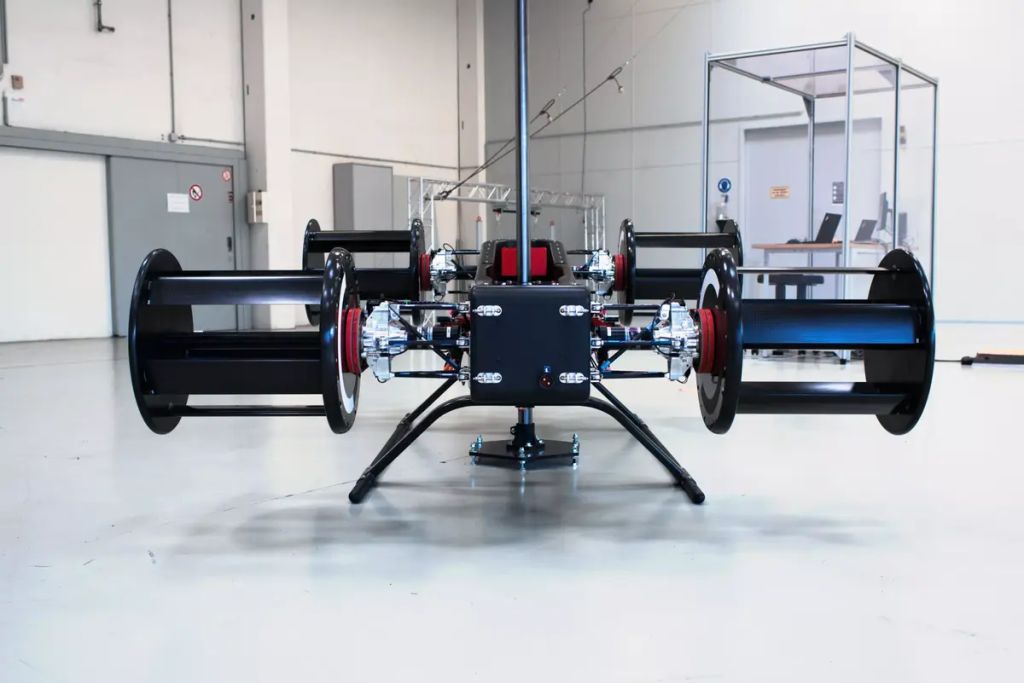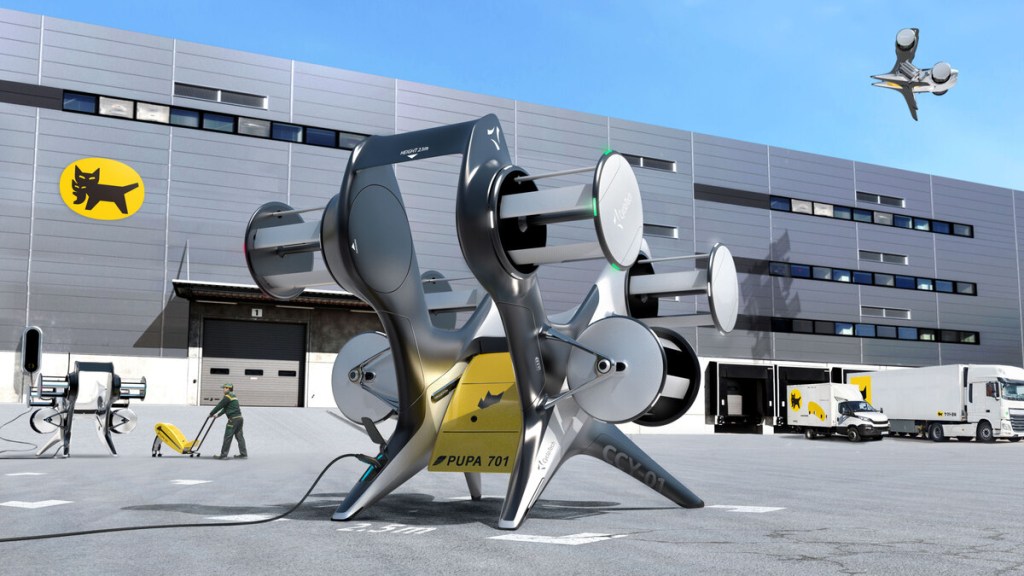
New Type of Flying Car Has ‘CycloRotors’ Instead of Propeller Blades
This is the Cyclotech CruiseUp, and it approaches the electric flying car space in a unique way. Rather than using a myriad of propellers, as you’d see with small drones and other eVTOL crafts, it uses what Cyclotech calls “CycloRotors.” The CycloRotors are those four hamster cages with flat discs extending from each corner. The advantages Cyclotech spells out make this possibly a step up from the other flying cars we’re seeing in development right now.
The Austrian company says the advantage of its vertical take-off car is a 360-degree thrust vector control system. Thrust is instant and allows the driver direct control to easily transition from hovering to flight in any direction. Most other flying cars only allow for maneuvers in a single direction and partially rely on tilting and banking.
Has the Cyclotech CruiseUp flying car flown yet?
Cyclotech designed and built its first four-rotor flying demonstrator back in 2021. Since then, it has flown over 100 times. From these test flights, Cyclotech is now zeroing in on a twin-rotor configuration for further development.
This year, it was permitted by Austro Control, the Austrian aviation safety authority, to begin test flights for a more advanced second demonstrator. Its first flight took place in August. “CycloRotors are the entry ticket to the mass market of sustainable aviation with an addressable market of millions of vehicles per year. We make your car fly,” says Markus Steinke, CycloTech’s Chief Development Officer.
How do the CycloRotors make lift?

The key to the system is a pitch mechanism that adjusts the angle of each blade in the circular cage. That is how the flying car can easily and quickly gain thrust-vector control. Cyclotech says, “CycloRotors are thrust-vector systems that enable an immediate thrust generation 360 degrees around the rotation axis, at constant rotation speed and direction, within fractions of a second.”
Of its many advantages, the size and arrangement of vehicles using a CycloRotor system are endless. The number of CycloRotors, sizes, and configurations in a passenger compartment are infinite. You can see that in several examples shown here.
Is Cyclotech developing more than a flying car?

And Cyclotech isn’t only working on flying car development. It also has a joint venture with Yamato Holdings, building a cargo eVTOL. It can carry 100 lbs of cargo with a range of 25 miles. And it is small, with only an eight-foot footprint. Obviously, scaling up its size would yield a larger cargo capacity.
It is also working on personal flying cars beyond its flying taxi and cargo developments. And all of it uses electric power for a very low CO2 footprint. It has even been the generator for stationary wind turbines to generate electricity. So, the technology seems to have almost no bounds.



